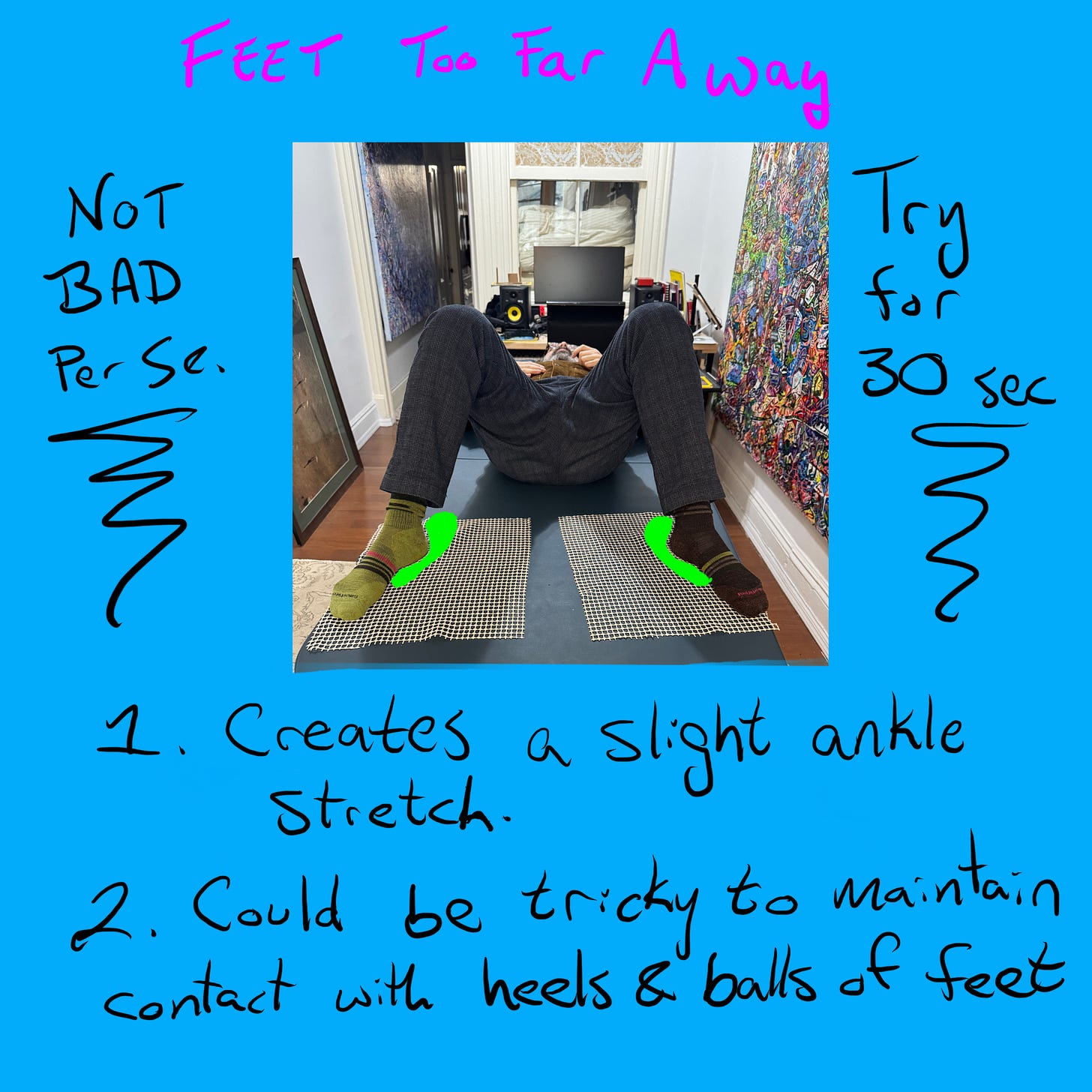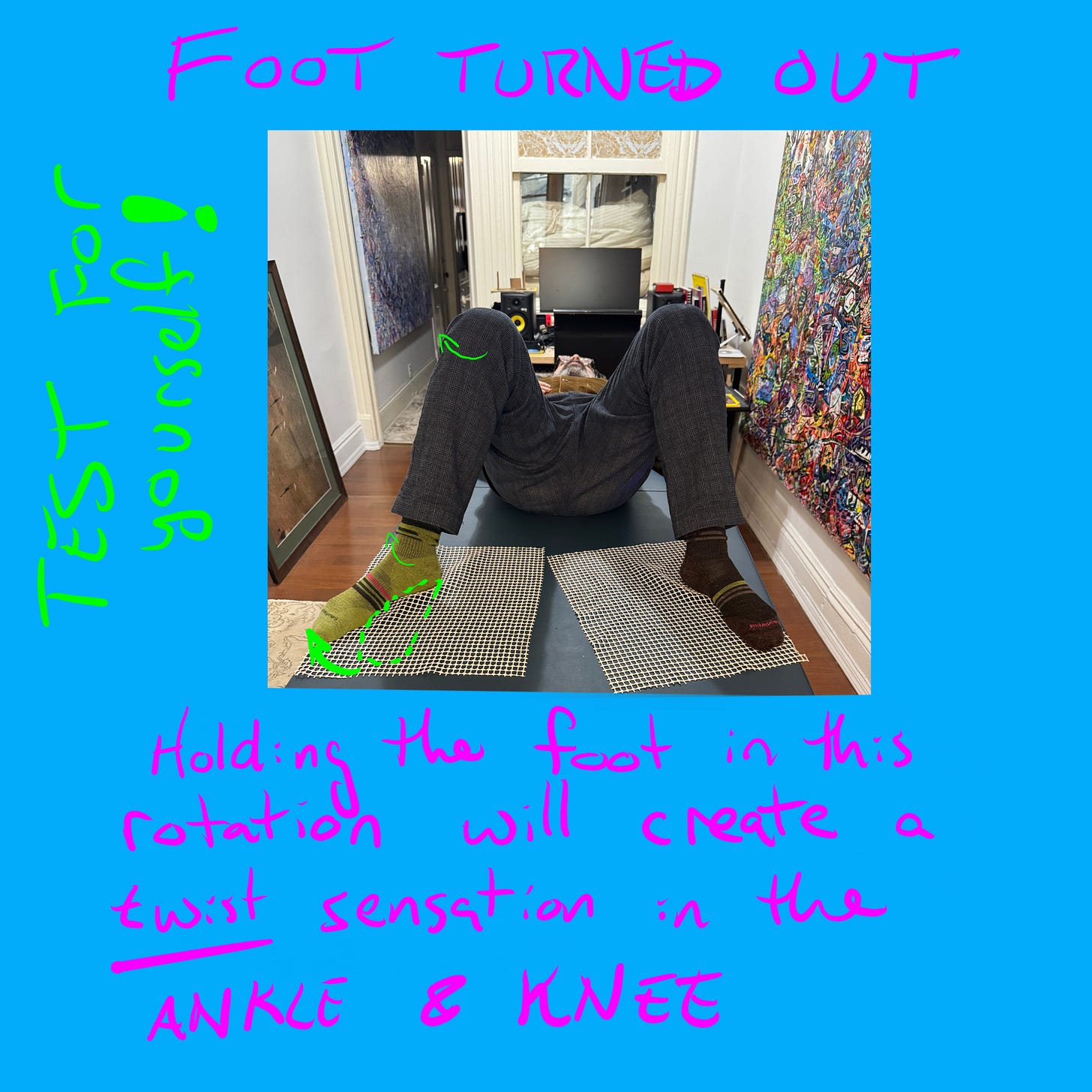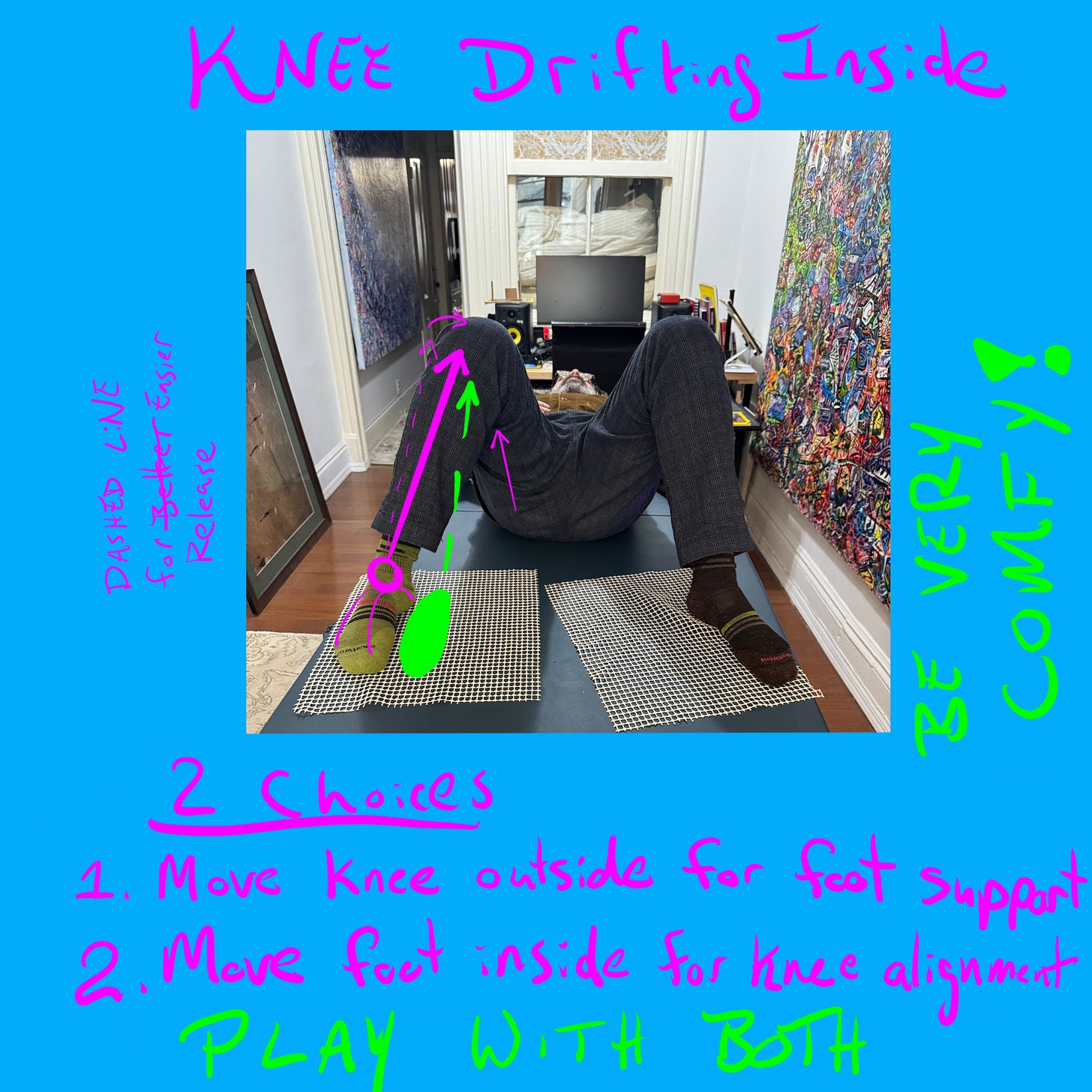Lying Down Part 4
Knees, Ankles, and Feet Matter
Last week, I had a super ambitious blog idea and kinda bit off more than I could chew. The drawings I shared with you on the neck took me a whiiiilllee to put together. I’ve called in the help of a friend to finish the thought for you so I promise that ONE DAY SOON we will all have the bodacious drawings we all crave.
In the meantime, I thought I would give you some more tips on how to lie down. In my previous posts on lying down, I’ve talked about the orientation of the eyes and the relationship of the head, neck, and upper back. Rather than talk about the torso, I’m going to jump on down and talk about the feet, ankles, and knees.
Recall the Variations
In my first post on lying down, I showed you a few variations with the legs. The purpose of these variations was to help the lower back release tension while lying down. Please bear these variations in mind.
If the legs are particularly stiff or the lower back is particularly sore, I suggest that you prop your legs up at 90 degrees on a couch or large bolster. Assuming that your level of tension is beginning to thaw, you should then move on1 to lying down with the knees pointing up.
Purpose of Knees Pointing Up
We can think of the knees pointing up as an arch between the hips and the feet. The big arrows along the femur (thigh bone) and tibia (shin bone) point up to the knee. Ideally, we want to feel each and every bit of our leg muscles alive and supple; supporting the buoyancy of whole leg/knee arch.
Typically if we have excess tension, we will experience this as tension around the front thigh muscles of the quadriceps. If you feel this within yourself, this implies that the other leg muscles are taking a bit of a vacation and very likely your hip muscles are stiff too. I want to stress that this is a typical pattern of tension and may not apply to you one lick!
Stop. Think. Explore. Think for Yourself.
And when all else fails, ask for help!!!!!!
Do The Wrong Thing
There are several variations that the feet, ankles, and knees can go through positionally. Each variation that I describe today is something that I’d like you to test out for yourself. Our habits are sneaky little devils and you may have a hidden pocket of tension that’s preventing the hips from releasing.
Take your time checking out the details of each photo and if something isn’t clear, please ask me for clarification!
Feet Too Close to the Butt
Feet Too Far Away
Foot Turned Out
Loosing Contact Inside
Feet Narrow
Knee Drifting Inside
There are two important variations I have omitted (because I forgot to take the photos). The first is flopping the knee too far outside so that the weight of the leg loads onto the pinkie toe and pressure builds up onto the outside of the ankle. This would look like the opposite of Fig 7 above. It will generate dead weight in the legs and tension in the ankles and hips.
The second is rotating the foot to the inside. This would be going in the opposite direction of Fig 4. You will absolutely get tension building in the ankle and knee if you hold this.
Know Your Variations
Knowing these variations and being comfortable resting in Fig 1 is a requirement for exploring bridges. Bridges will help you better understand the articulation of the legs in squatting. And squatting is an essential part of….living! So do take you time exploring these variations in your lie downs. You should feel something like what I’ve described above.
If you have ANY soft tissue damage in the legs, ankles, or feet, please be intelligent and don’t treat yourself like an amusement park. That’s only for Mötley Crüe.
Get In Touch
If you’re in NYC, you may learn more about my private teaching practice at johndalto.com.
If you’d like to book any lesson time with me, you can find my booking link here.
I do NOT mean that you have graduated past using the couch or large bolster for your whole life. I simply mean that some days you’ll feel better than others. If you feel relatively good, try out the variations in today’s post!









I hear a lot about 'micro,' but a small (micro) movement when you think about how your body should or could move is a game changer for me. Inhibiting how I used to stand up from a chair has been a big one. Another great piece.